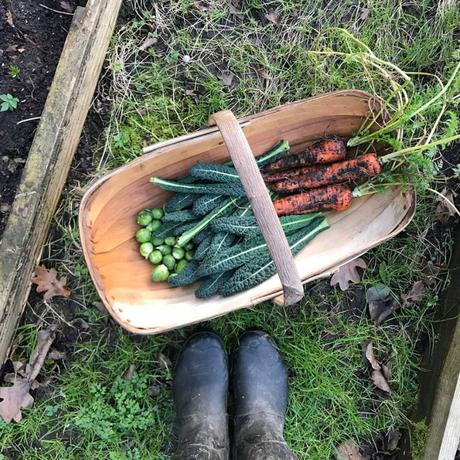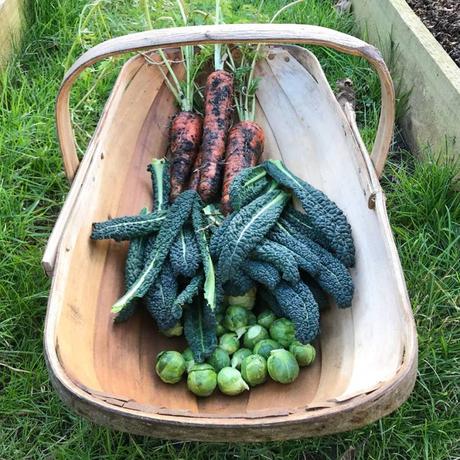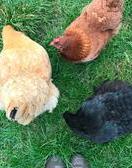Biting winds, rain, hail and snow showers, we’ve never been so thankful for the occasional glimpse of sunshine to provide some respite. Ooh naughty February! Welcome back to our monthly catch up posts where we show you what’s growing on in our garden smallholding.

The vegetable garden in February still offers fabulous things to eat thanks to a bit of careful planning. By dedicating a whole bed to carrots rather than just a couple of rows for late summer/autumn use, we’re still pulling tasty roots of ‘Autumn King’. Standing well in our soil our garden tends to get rather boggy in winter so this variety really is worth growing. The same can be said for ‘Gladiator’ parsnip, fantastic roots right through to spring.

Another great crop providing nutritious leaves from summer right through to winter is kale. ‘Nero Di Toscana’ will grow in difficult conditions such as a shady spot and poor drainage (trust us, we know!). The flavor improves after a frost and once it finally bolts the flowers can be eaten too.
We’ve just finished picking the last of the Brussels Sprouts and now we’re patiently waiting for spears of beautiful early sprouting broccoli to make an appearance. Early purple sprouting is sown late spring one year and produces from February/March the following year – so you really do need to be patient!
Autumn-fruiting raspberry canes got their annual chop this week. Rich carefully tidied around to remove the old leaves and debris being careful not to damage emerging canes, finishing up with a mulch of compost afterwards.
The canes are very spiky – gloves are needed! In just a couple of months the whole bed will be brimming with fresh new growth.
Rather than burning or composting we’ve decided to keep the cut raspberry canes and use them as organic slug and snail deterrents (due to the spikes), laying them on the ground in and around seedlings.
Something has had a go at the broad bean seedlings underneath the cloche tunnels (unlikely to be a pigeon, a mouse perhaps?), a bit of soil disturbance and a couple of seedlings vanished – one is wilting so I guess the seed bean is damaged. This is the first place we’re going to use the canes. I wonder if mice will be that bothered by a few spikes? It’s an experiment so we’ll let you know if it works.
Our chickens were beginning to lay regularly (except for Mrs Broody pants), a couple have now decided to have another moult which means no eggs.
Some of our girls are getting on for retirement, perhaps nearer summer we’ll increase the flock seeing as we have a new coop!

